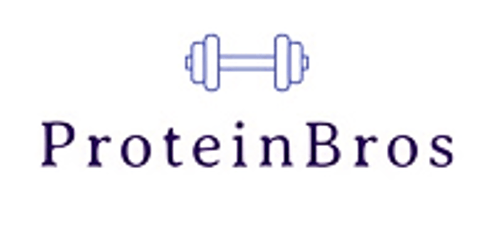
Knee Sleeves vs. Knee Wraps: Which Is Better for Lifting? A Comprehensive Comparison for Powerlifters
Knee sleeves and knee wraps are popular support gear for weightlifters and powerlifters. Both provide compression and stability to the knee joint during heavy lifts, but they serve different purposes and have distinct advantages. Learn more here!
12/16/20245 min read
Knee sleeves and knee wraps are popular support gear for weightlifters and powerlifters. Both provide compression and stability to the knee joint during heavy lifts, but they serve different purposes and have distinct advantages.
Knee sleeves offer better overall support for general lifting and are more suitable for most recreational lifters. They provide warmth, reduce joint pain, and improve proprioception without significantly altering lifting mechanics. Knee wraps, on the other hand, are designed primarily for competitive powerlifters attempting maximal squat attempts.
Choosing between knee sleeves and knee wraps depends on individual goals, lifting style, and experience level. Factors such as comfort, ease of use, and intended purpose play crucial roles in determining which option is best suited for a lifter's needs.
Understanding Knee Sleeves and Knee Wraps
Knee sleeves and knee wraps are supportive gear used in weightlifting to provide compression and stability to the knee joint. These accessories differ in their design, application, and effects on performance.
Definition of Knee Sleeves
Knee sleeves are cylindrical, elastic garments that slide over the knee. Made from neoprene or similar materials, they provide compression and warmth to the joint. Sleeves come in various thicknesses, typically ranging from 3mm to 7mm.
They offer moderate support and help maintain joint warmth during workouts. Knee sleeves are easy to put on and take off, making them convenient for regular use. They're popular among athletes in various sports, including weightlifting, CrossFit, and powerlifting.
Sleeves can enhance proprioception, potentially improving an athlete's awareness of knee position during exercises. They may also help reduce post-workout swelling and aid in recovery.
Definition of Knee Wraps
Knee wraps are long, elastic bandages specifically designed for weightlifting. They're typically made from a blend of cotton and elastic materials. Wraps are applied by tightly winding them around the knee joint.
The primary purpose of knee wraps is to provide significant compression and support during heavy lifts. They're most commonly used in powerlifting, particularly for squats.
Wraps require proper application technique to be effective. When applied correctly, they store elastic energy during the descent of a squat. This energy is then released during the ascent, potentially increasing the weight an athlete can lift.
Historical Use in Weightlifting
Knee wraps have been used in powerlifting since the sport's early days in the 1960s. They became popular as lifters sought ways to increase their squat numbers.
Initially, wraps were made from basic elastic bandages. As the sport evolved, specialized knee wraps designed for powerlifting emerged. These offered greater elasticity and support.
Knee sleeves gained popularity more recently, in the late 1990s and early 2000s. They were initially used in rehabilitation settings before being adopted by weightlifters and CrossFit athletes.
The use of both knee wraps and sleeves has sparked debates in the weightlifting community. Some argue they provide an unfair advantage, while others view them as essential protective gear.
Comparative Analysis of Knee Sleeves and Wraps
Knee sleeves and wraps differ significantly in their design, materials, and performance benefits for weightlifters. These differences impact their suitability for various lifting activities and user preferences.
Material and Durability
Knee sleeves are typically made from neoprene, a synthetic rubber known for its elasticity and insulation properties. This material allows for a snug fit while providing warmth to the knee joint. Sleeves often range from 3mm to 7mm in thickness, with thicker options offering more support.
Knee wraps, on the other hand, consist of elastic material similar to heavy-duty bandages. They're usually made from a blend of cotton and elastic fibers, allowing for adjustable tightness. Wraps can be wrapped tightly around the knee in various patterns.
Both knee sleeves and wraps are durable when properly cared for. Sleeves may lose elasticity over time, while wraps can fray at the edges with repeated use.
Support and Performance Enhancement
Knee sleeves provide compression and warmth to the knee joint, promoting blood flow and reducing pain during lifts. They offer moderate support, helping to stabilize the knee and potentially improving lifting form.
Knee wraps offer more intense compression and support. When tightly wrapped, they store elastic energy during the descent of a squat, which can be released to aid in the upward motion. This energy return can lead to increased lift numbers.
Sleeves are generally more comfortable for extended wear, making them suitable for entire workout sessions. Wraps are typically used only for specific heavy lifts due to their restrictive nature.
Flexibility and Movement
Knee sleeves allow for a greater range of motion compared to wraps. They move with the knee, providing consistent support throughout exercises. This flexibility makes sleeves ideal for various movements beyond just squats.
Knee wraps significantly restrict movement, particularly at the bottom of a squat. This limitation can alter lifting mechanics and may not be suitable for all types of lifts or training styles.
Sleeves are easier to put on and take off, making them more convenient for general use. Wraps require skillful application to achieve the desired tightness and support, which can be time-consuming.
Applications and Use Cases
Knee sleeves and knee wraps serve distinct purposes in weightlifting and strength training. Their applications depend on the type of exercise, lifting goals, and individual needs.
Recommended Scenarios for Knee Sleeves
Knee sleeves are versatile and suitable for various lifting scenarios. They provide compression and warmth, making them ideal for general weightlifting sessions and workouts.
Powerlifters often use knee sleeves during squats to enhance performance and reduce injury risk. Olympic weightlifters benefit from the added stability during clean and jerks or snatches.
CrossFit athletes favor knee sleeves for their versatility across different movements. They offer support during high-rep squats, box jumps, and other dynamic exercises.
Knee sleeves are also popular among recreational lifters for their comfort and ease of use. They can be worn throughout an entire workout without hindering movement.
Recommended Scenarios for Knee Wraps
Knee wraps are primarily used in powerlifting competitions and heavy squat training. They provide significant support and elastic energy, allowing lifters to handle heavier loads.
Competitive powerlifters use knee wraps during squat attempts to maximize their lifting potential. The tight wrapping creates a spring-like effect, aiding in the ascent phase of the squat.
Strength athletes may incorporate knee wraps into their training cycles when preparing for competitions. This helps them acclimate to the feeling and performance boost provided by the wraps.
Knee wraps are less suitable for general training due to their restrictive nature. They are typically reserved for maximal effort lifts or specific squat variations focused on overload training.
Making an Informed Decision
Choosing between knee sleeves and knee wraps requires careful consideration of your specific lifting goals and physical needs. Factors like the type of lifts performed, competition rules, and personal comfort play key roles in this decision.
Assessing Your Individual Needs
Powerlifters often prefer knee wraps for their ability to increase lift numbers. These wraps provide significant compression and rebound, potentially boosting squat performance. Knee sleeves, on the other hand, suit CrossFit athletes and Olympic weightlifters better. They offer warmth and support without restricting movement.
Injury history is another crucial factor. Those with previous knee issues may benefit from the added stability of sleeves. Wraps can be more challenging to use and may put additional stress on joints if not applied correctly.
Pros and Cons for Lifters
Knee Sleeves:
Pros: Easy to use, provide warmth, offer moderate support
Cons: Less performance enhancement, may slip during intense workouts
Knee Wraps:
Pros: Significant performance boost, customizable tightness
Cons: Require practice to apply, can restrict blood flow if too tight
Comfort is essential for consistent training. Sleeves are generally more comfortable for extended wear. Wraps, while effective for heavy lifts, can be uncomfortable when worn for long periods.
Cost and durability also differ. Sleeves tend to last longer and require less maintenance. Wraps may need more frequent replacement but are often less expensive initially.
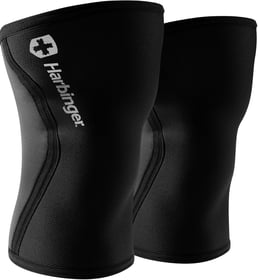

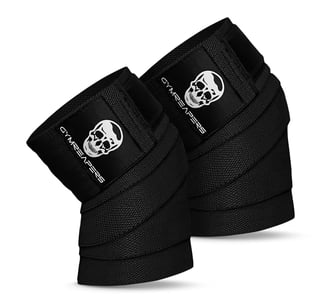

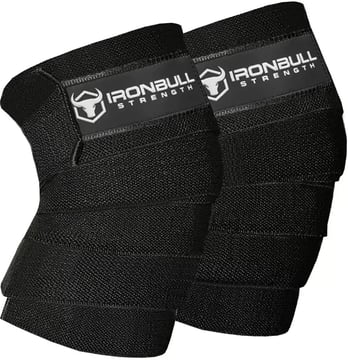

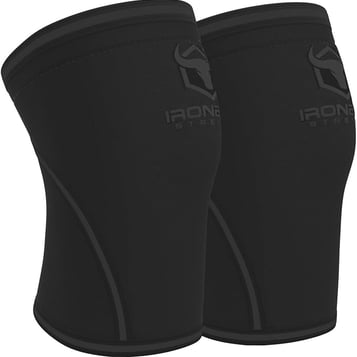

Additional info
Social media coming soon!
Contact us
Newsletter coming soon!
© 2024. All rights reserved.
